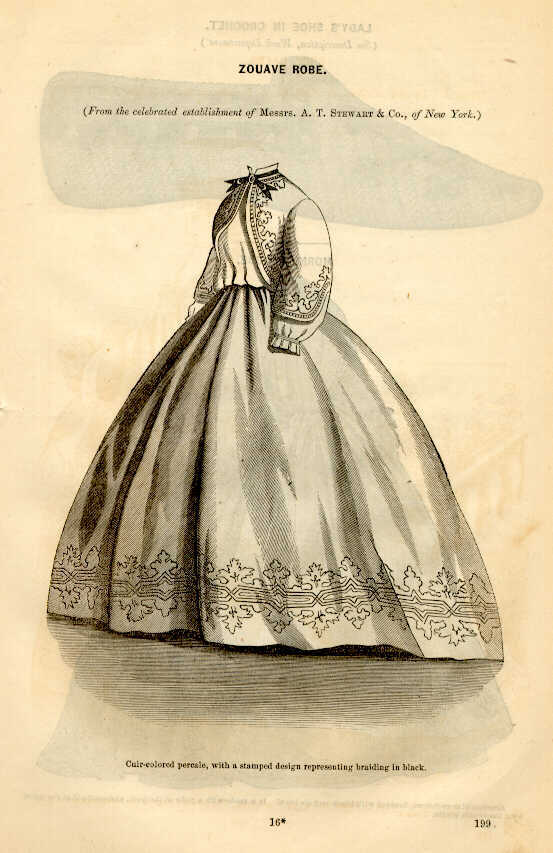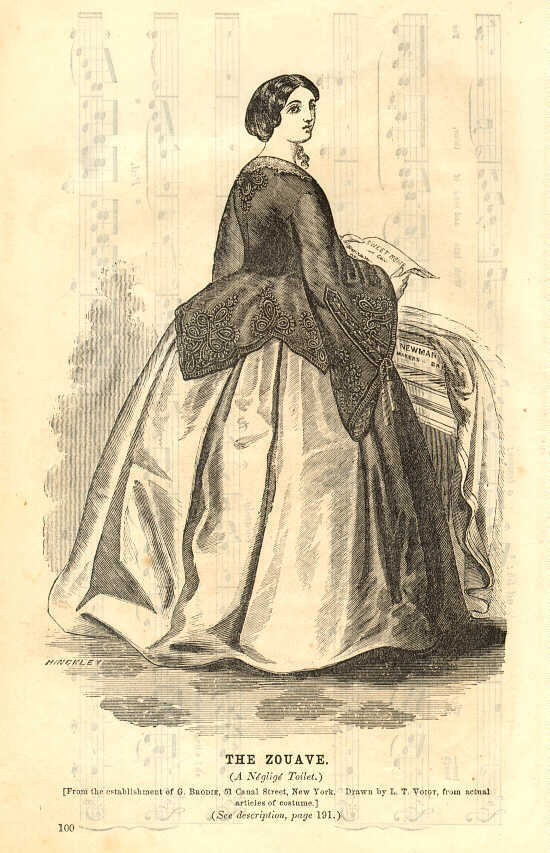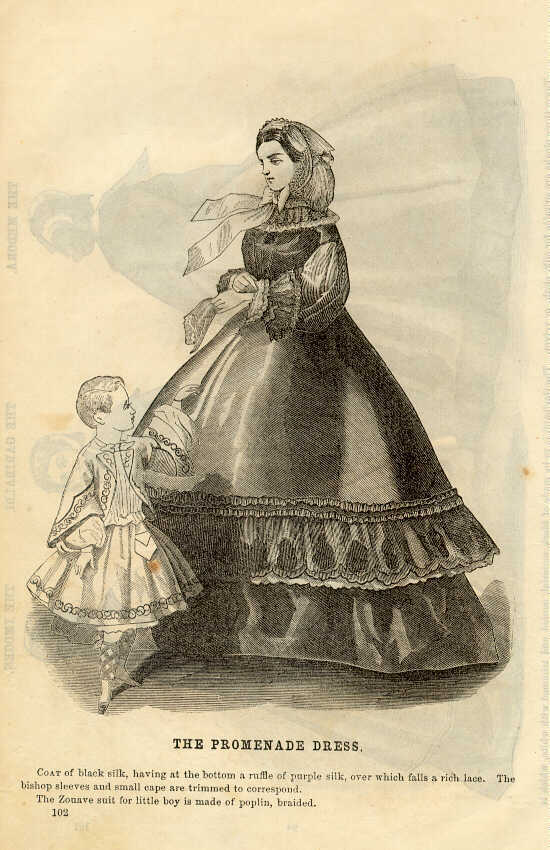The Zouave Jacket Frenzy in the 1860s
Military uniforms have influenced fashion throughout history and continue to do so today. In the mid-nineteenth century, Americans were taken with the French Zouave in the Crimean War as they were publicized in newspapers and magazines. Americans were so enchanted by the Zouave that volunteer units for the Civil War modeled their uniforms after them, and women and children began wearing jackets and vests that mimicked the style.
![19531401 ad [1]-4 19531401 ad [1]-4](https://www.mdhistory.org/wp-content/uploads/2020/03/blogs//1953140120ad205B15D-4.jpg)
The original Zouave date back to 1831 in North Africa; a French Battalion operating in Algeria to maintain their hold on the territory was made entirely of people from the North African tribe called the Zouaoua. While the Zouave would eventually consist of only European men, the style of the uniform retained its Arab influence, consisting of billowing pantaloons, an embroidered waistcoat or jacket, and a fez.
![IMG_1122[1]-013071-edited.jpg IMG_1122[1]-013071-edited.jpg](https://www.mdhistory.org/wp-content/uploads/2020/03/blogs//IMG_11225B15D-013071-edited.jpg) Zouave Uniform worn by Felix Agnus, 1944.9.1-.3 Maryland Historical Society, Gift of Mrs. Oscar Leser
Zouave Uniform worn by Felix Agnus, 1944.9.1-.3 Maryland Historical Society, Gift of Mrs. Oscar Leser
The Zouave fashion craze in the Civil War era militia is likely due to the success and reputation of the French Zouave in the decade prior. The Zouave were considered elite troops with incredible military talent. It is not surprising then that several volunteer troops on both sides of the Civil War adopted the Zouave style and bravado, in hopes of mimicking their fame and success. So many units in fact adopted this style that a French newspaper commented “Ils pleut des Zouaves” translated to “It's raining Zouaves” in 1861. The uniform pictured above is one of three Zouave uniforms in the Fashion Archives at the Maryland Historical Society. It was worn by French-born Felix Agnus (1839-1925) while Captain in the 165th New York Volunteers (2nd Battalion, Duryee's Zouaves).
![IMG_1127[1] IMG_1127[1]](https://www.mdhistory.org/wp-content/uploads/2020/03/blogs//IMG_11275B15D.jpg) Zouave jacket, cotton pique c.1861, 1944.76.22 Maryland Historical Society, Gift of John Ridgely
Zouave jacket, cotton pique c.1861, 1944.76.22 Maryland Historical Society, Gift of John Ridgely
Uniforms were not the only clothing that saw the influence of the Zouave trend, women's and children's fashion also adopted elements of the popular style. Particularly, the swirling embroidery and the open, cropped jacket found incredible popularity. In the early 1860s, Zouave jackets became trendy accessories for women to wear for many occasions. The following excerpt from Godey's Lady Book details the phenomenon:
“Zouave Jackets are worn both for morning and full dress; for the former they are made of the same material as the skirt, or else of white pique, braided or embroidered. We have seen some very pretty ones with a narrow vine running all round them, and large bunches at each corner in front, smaller ones being placed at the neck where the jacket is fastened, also in the middle of the neck behind, and just above the hem or scallop at the back, directly in the centre. Colored braids are much used on the pique, and the effect is good. Some of the shirts have a frill down the front plaited like a shirt frill and decorated with velvet. For children of both sexes, these Zouaves are all the rage; they are made of all kinds of materials, thick and thin, but the white pique suit with broad, gay ribbon sash and the little turban hat with plume, makes a very pretty and stylish costume. The evening Zouaves are made of mull muslin, embroidered, with shirts to match, or figured blonde lace trimmed with ruching or narrow blonde edge; the skirt is also of lace. This last style of Zouave is quite new, particularly light and graceful, and at the same time stylish.”
– Godey's Lady Book, June 1861
 |
 |
 |
It is evident that the term Zouave in relation to fashion broadened to encompass many types of open jackets in various fabrics and colors for varying occasions. There is some ambiguity in Zouave outerwear for women for while the style was very popular, clothing still had to fit into the appropriate guidelines. The cording might be replaced by beading, or lace could be used to embellish the borders. The puffed sleeve might be exchanged for an exaggerated pagoda sleeve. For evening wear, a Zouave jacket might have a matching skirt that mimicked the bold embroidery. A morning robe would be longer and heavier especially for the winter months, but still have the swirling cording that mimicked to the uniform. For trips to the seaside, the Zouave jacket would be lighter in both color and material, looking more like the style above. For children, a Zouave jacket could have matching pants or a skirt.
Despite the many iterations of the Zouave jacket in women's and children's fashions, some elements remained. The front of the jacket always fell away at the bottom, and there was always some embellishment along the borders. No matter how it was accomplished, the Zouave jackets were bold statement pieces that called back to the brilliant red and blue Zouave uniforms and the troops who wore them.
New Call-to-action
References
“Chitchat Upon New York and Philadelphia Fashions for June,” Godey's Lady Book, June 1861
Phelan, Ben. “Who Were the Zouaves?” (May 2015). http://www.pbs.org/wgbh/roadshow/stories/articles/2015/5/18/who-were-zouaves
“Regiments of the Civil War.” Civil War Trust. October 2017. https://www.civilwar.org/learn/articles/regiments-civil-war
Troiani, Don. Don Troiani's Civil War (1995). Mechanicsburg, PA: Stackpole Books.

